China
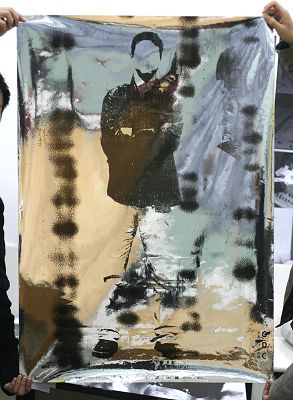
Poster by Bi Xuefeng The poster is printed on highly reflecting aluminized plastic foil, so the beige and blue colors are not in the poster but reflect the room in which it hangs. |
In November 2005, Jianping He took me to a graphic design discussion in Professor Wang Min's class at CAFA, the famous Central
Academy of Fine Arts in Beijing, together with Ken Tsai Lee, a graphic designer from Taiwan, now living in New York.
I could follow the discussion with the help of an english speaking translator.
It soon concentrated on the question whether graphic design, and in particular graphic design teaching, should orient itself on current world trends, and european graphic design history, or rather look towards chinese visual art tradition for inspiration, and develop a unique chinese brand of graphic design. The opinions were divided about evenly, as far as I could tell, with one side arguing that China has it's own roots and does not have to imitate another culture, and the other side saying that graphic design was invented and developed in Europe first, like it or not, and there is no point in re-inventing the wheel, and a special version of chinese graphic design could only evolve after the basics had been understood and mastered. I would like to add two personal observations, that would indicate that the second opinion is prevalent in chinese graphic design education:
Ken Tsai Lee made the interesting observation that the concept of making "chinese graphic design" is nonsense. A good chinese designer will produce an original, unique, local work of art because he has already absorbed chinese culture and thinking from his daily life and education in China. If he consciously tries to have a "chinese style", he will at best produce some kind of Disneyland art, a poor facsimile of the real thing. The posters at left and below were lying around on a table in the classroom, they had just been received from Shenzhen and were made to advertise the "Graphic Design in China" exhibition and meeting in Shenzhen in December 2005. To me, they represent typical "chinese posters", not ment to win prizes in international competitions dominated by western juries, but what chinese graphic designers do when they are among themselves. To see them was an interesting conclusion of the discussion on national identity. |
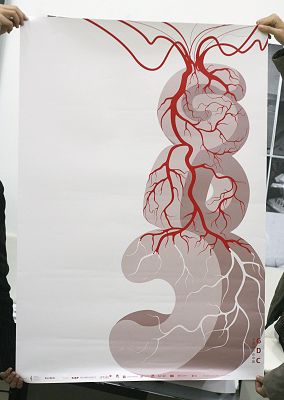
Posters by unknown chinese designers. |
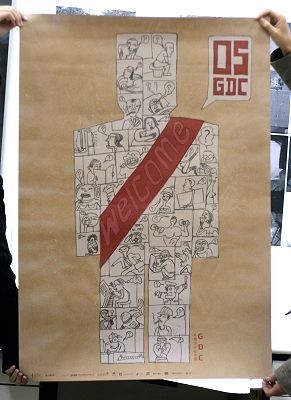
|
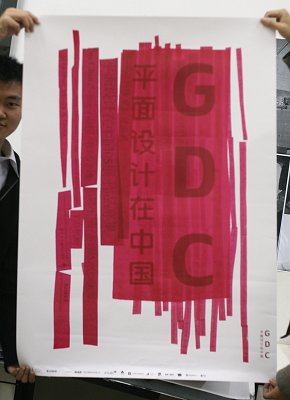
|
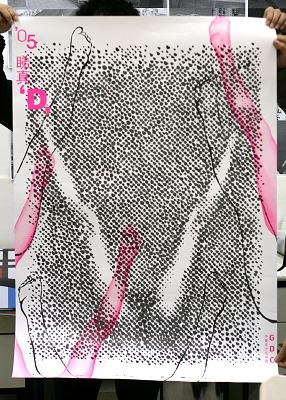
|
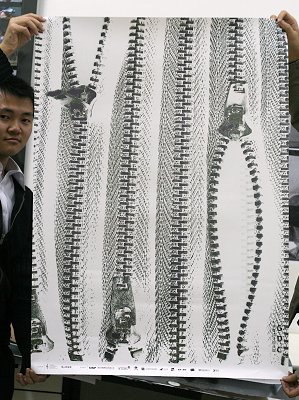
|
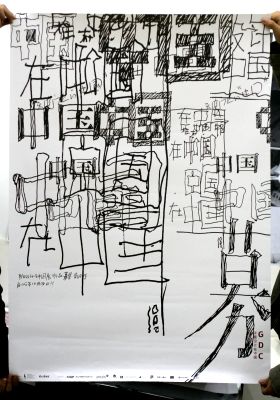
|
Iran
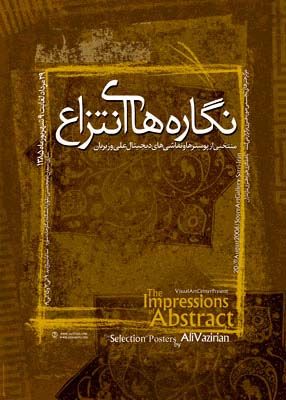
Exhibion poster by Hossin Yoozbashi |
As in China, opinions in Iran are divided about the purpose and style of posters with respect to national identity. In parallel to the recent political changes in Iran, the weight is shifting away from a progressive, international style, as represented for example in the results of the 8th Tehran International Poster Biennial 2004. The announcement by Ali Vazirian of his poster exhibition
28 Aug - 5 Sep 2006, Sooreh Art Gallery, Daneshgah boulevard, Imam Khomeini square, Sarri, Iran. Can There Be Graphic Arts With Iranian Identity?
"Perhaps if this question had been posed regarding Iranian painting and painters, to response to it would not have been so difficult ; because of the existence of the historical experience of Iranian painters, the same question [if asked about painting] could have a positive response. But the issue of the graphic arts is an issue whose evolution has been tied with the contemporary western civilization. It is clear that the contemporary graphic arts have no ties with our beliefs and traditions. Moreover, this art negates our beliefs and traditions, because the advertisement which has given life to the contemporary graphic arts is not of the same kind as the promulgation which seeks to bring about real transformation in the audience. This advertisement is distinguished with its ability to divest the man of his awareness; it is a tool which serves to generate more profit. In this manner the response to above question is clear. Contemporary graphic arts are a negation of national identity and traditional experiments. But if one believes in a category called "cultural graphic arts", one can believe in a transformation in this field. The world of "culture" is different from what is seen and from Everyday life, and an artist is not committed to superficial Approaches and observance of the public taste. Actually, the creation of a work in the fields of culture, art and literature would allow him to transcend the limits of the contemporary graphic arts and provide him with a clue to break away from "being an instrument". The appropriation of the contemporary graphic arts can only pave the way for a real transformation if one resorts to representational tradition, and not through mere addition of traditional depictions. Such a thing can naturally be in contradiction to graphic arts as an advertising medium. The present collection which is, for the most part, within a framework which can be called "cultural graphic arts" includes thought-provoking works which encompass artistic allusions, and hence some of them contradict the foundations of the contemporary graphic arts as an "Advertising medium". The present collection shows that Vazirian has tried to show the range of his experiences in the past years in such area as posters, and design. The methods utilized are as diverse: computer design, compositions including abstract and tow-dimensional forms and the creation of illustrations which tell a story and have an element of fantasy in them. One must say that he has been successful in all of his experiments, boldly utilizing all of the resources of the contemporary graphic arts. This is all shown by his methods in utilizing the main contrasts of color, and especially black which can strongly reflect form and emotions, utilization of callage, story-telling illustration and abstract forms. Here it must be emphasized that the color of black, as the eternal element of the graphic arts, contrasted with other colors and the color of white, has achieved a very lasting status in his works. One could say that being in tune with culture, literature and art, Vazirian has been able to the experience the limits of contemporary graphic arts, understand "form" and its language and elevate its general imports in his works." |
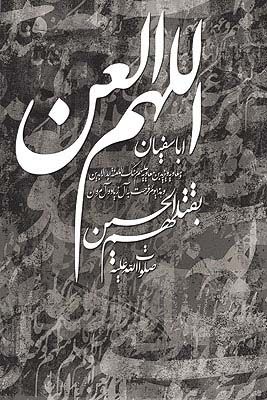
Posters by Ali Vazirian |
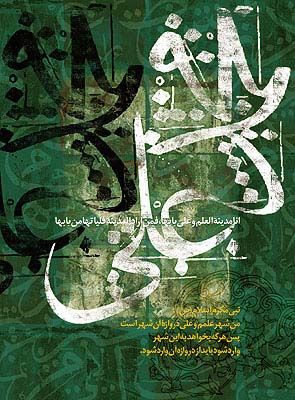
|

|
home previous exhibitions page created on August 30, 2006 / this section is part of Rene Wanner's Poster Page /